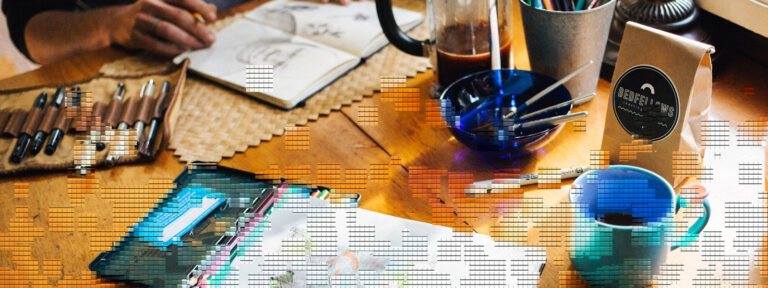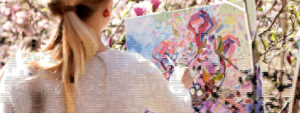Starting your artistic journey can be an exciting and fulfilling endeavor. I will explore five must-have tools for traditional artists that they should consider having in their arsenal. The tactile experience of working with physical materials and the freedom to explore various techniques make traditional art a timeless medium.
However, with so many tools available, it can be overwhelming to determine which ones are essential for beginners.
As a graphic designer, these tools can be an essential part of your work. If you haven’t already, I highly recommend checking out “Introduction to Graphic Design: Essential Skills and Tools.”
Whether you’re a painter, sketch artist, or mixed-media enthusiast, these tools will provide a solid foundation for your artistic practice. Let’s dive in!
High-Quality Sketching Pencils
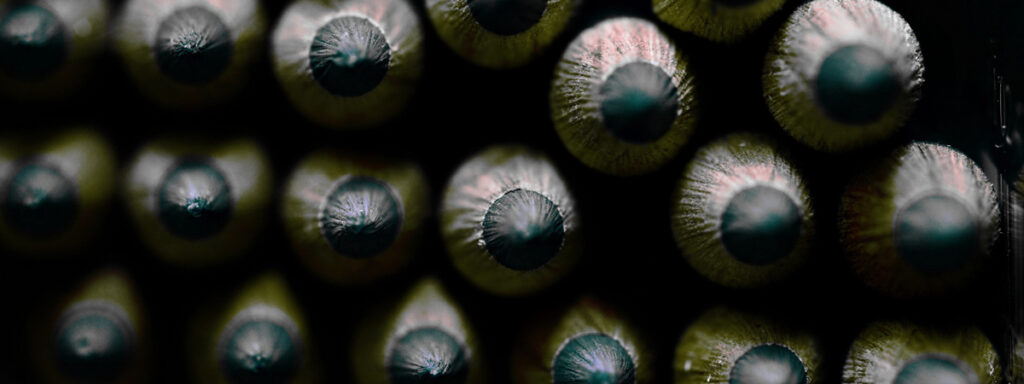
Sketching pencils are a fundamental tool for artists of all levels. These versatile tools allow you to create preliminary drawings, explore compositions, and add detailed shading to your artwork.
Investing in high-quality sketching pencils will elevate your artistic experience and provide the necessary tools to bring your ideas to life.
Here are some key aspects to consider when selecting your sketching pencils:
Lead Grades and Hardness:
Sketching pencils come in a variety of lead grades, which determine the hardness and darkness of the lines you can achieve.
The most common grading system ranges from 9H (hard) to 9B (soft). A pencil with a high H value, such as 4H or 6H, produces lighter and finer lines, ideal for precise details and light sketches. On the other hand, a pencil with a high B value, like 4B or 6B, creates darker and softer lines, perfect for shading and adding depth to your drawings.
Having a range of lead grades will give you the flexibility to experiment and achieve different effects in your artwork.
Ergonomics and Comfort:
Consider the design and feel of the pencil in your hand. Look for pencils with a comfortable grip that allows for extended periods of use without causing discomfort or fatigue.
Some pencils have ergonomic features, such as cushioned grips or triangular shapes, which provide better control and reduce strain on your fingers.
Testing different pencils before making a purchase can help you find the one that suits your preferences.
Pencil Cores and Quality:
The core of a sketching pencil is made of a mixture of graphite and clay. The quality of the pencil’s core affects the smoothness of the drawing experience, the consistency of the lead, and the level of breakage.
Artist-grade pencils generally have a higher proportion of graphite, resulting in a smoother and more durable lead.
Look for reputable brands known for their high-quality pencils, as they are more likely to offer consistent performance and longevity.
Portability and Organization:
If you plan to sketch on the go or attend art classes or workshops, consider the portability and organization of your sketching pencil set.
Look for sets that come in a convenient storage case or tin box to keep your pencils organized and protected.
Compact sets are lightweight and easy to carry, allowing you to have your essential sketching tools readily available wherever you go.
Additional Accessories:
Some sketching pencil sets may include additional accessories such as erasers, sharpeners, and blending tools. While not essential, these extras can be convenient and enhance your sketching experience.
- High-quality erasers, such as kneaded erasers or vinyl erasers, are essential for making corrections and achieving clean lines.
- A reliable sharpener ensures that your pencil points are sharp and precise.
- Blending tools, like tortillons or blending stumps, allow you to smudge and blend graphite for smooth shading effects.
Experimentation and Personal Preference:
Remember that finding the right sketching pencils is a personal journey. Different artists have varying preferences when it comes to lead hardness, pencil weight, and other factors.
Don’t hesitate to try out different brands and types of pencils to discover the ones that resonate with your artistic style and techniques.
Exploring and experimenting with different sketching pencils will help you develop a better understanding of their unique qualities and how they can contribute to your artistic expression.
Versatile Set of Brushes
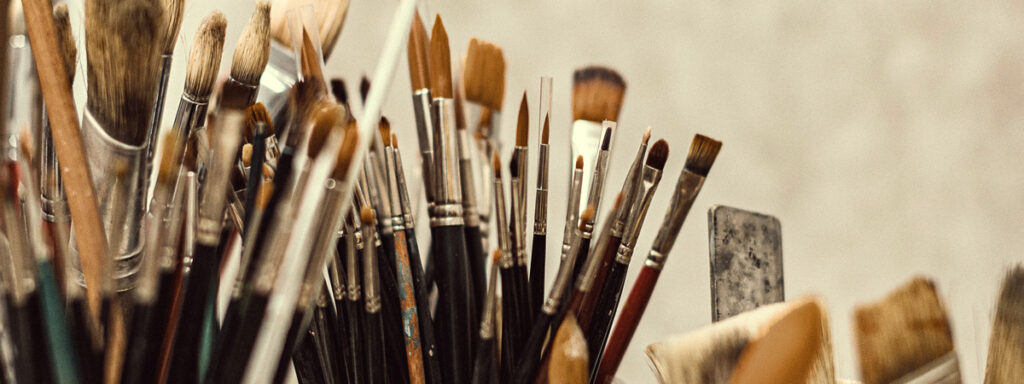
A versatile set of brushes is essential for traditional artists, as they allow you to apply different techniques, create various textures, and work with different mediums.
Whether you’re a painter or a mixed-media artist, having a well-rounded collection of brushes will enhance your ability to bring your artistic vision to life.
Here are some key considerations when building your versatile brush set:
Brush Materials:
Brushes are available in a range of materials, with the most common being synthetic and natural bristles.
- Synthetic brushes, often made of nylon or taklon, are excellent for watercolor and acrylic painting. They are more affordable, durable, and easier to clean.
- Natural bristle brushes, typically made of animal hair like sable or hog, are commonly used for oil painting. They hold more paint, provide a smoother application, and offer better blending capabilities.
Choosing the right brush material depends on your preferred medium and painting style.
Brush Shapes and Sizes:
Brush shapes determine the type of strokes and effects you can achieve. A versatile brush set should include a variety of shapes such as round, flat, filbert, and fan brushes.
- Round brushes are versatile and suitable for creating fine lines, details, and washes.
- Flat brushes are ideal for creating broad strokes, filling in large areas, and creating straight edges.
- Filbert brushes have a rounded, flat shape that allows for both precise strokes and blending.
- Fan brushes are great for creating texture, blending, and adding special effects.
Having brushes in different sizes within each shape will provide even more flexibility in your artwork.
Quality and Durability:
Investing in high-quality brushes ensures better performance, durability, and longevity. Cheaper brushes may lose bristles, have inconsistent performance, or deteriorate quickly with repeated use and cleaning.
Look for brushes with secure ferrules (the metal part that holds the bristles) and handles that are comfortable to hold.
Quality brushes retain their shape, maintain their bristles, and offer better control over paint application.
Maintenance and Care:
Proper brush care is essential for keeping your brushes in optimal condition.
- Clean your brushes thoroughly after each use to prevent paint buildup and maintain their performance.
- Use mild soap or brush cleaner designed for your specific medium.
- Shape the wet bristles back into their original form and let them air dry.
- Avoid leaving brushes in water or solvent for extended periods, as this can damage the bristles.
Additionally, store your brushes upright or lay them flat to prevent deformation.
Specialized Brushes:
Depending on your artistic style and preferences, you may want to consider specialized brushes to expand your creative possibilities.
Some examples include:
- rigger brushes for fine lines and details,
- mop brushes for soft washes,
- palette knives for textured effects,
- and dagger brushes for unique strokes.
These specialized brushes can add depth and variety to your artwork, allowing you to experiment and create distinctive effects.
Experimentation and Adaptation:
Don’t be afraid to experiment with different brushes and explore unconventional uses.
Brushes can be versatile tools that go beyond their intended purpose.
Try using a flat brush sideways to create expressive broad strokes or use a fan brush to create unique textures.
As you become more familiar with your brush set, you’ll discover new techniques and adapt them to your artistic style.
High-Quality Paper and Sketchbooks
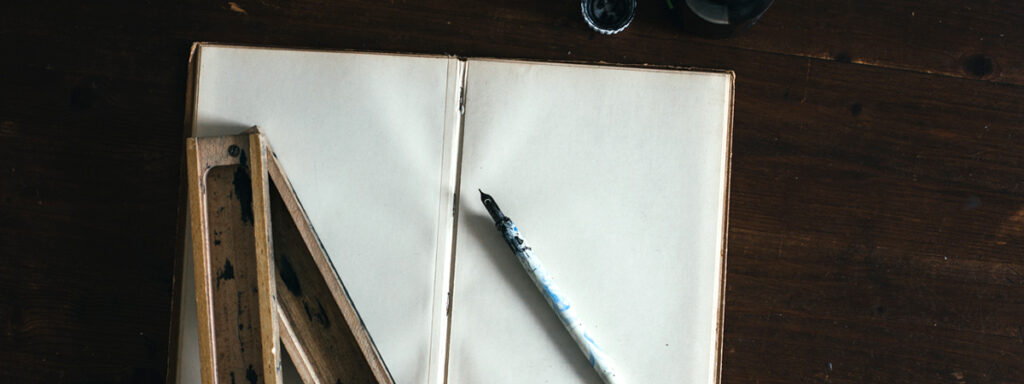
Choosing the right paper and sketchbooks is crucial for artists, as it directly affects the quality, longevity, and overall appearance of your artwork.
Whether you’re working with graphite, ink, watercolors, or other mediums, investing in high-quality paper will provide a solid foundation for your artistic expression.
Here are some important factors to consider when selecting paper and sketchbooks for your traditional art practice:
Weight and Thickness:
Paper weight is measured in grams per square meter (gsm) and determines the thickness and durability of the paper.
Lighter paper, such as 90 gsm, is suitable for sketching and experimenting, while heavier paper, such as 300 gsm or more, is ideal for wet media like watercolors.
Thicker paper resists buckling and warping, allowing you to work with wet techniques without compromising the integrity of the paper.
Consider the requirements of your chosen medium and select a paper with an appropriate weight for your intended purpose.
Texture and Surface:
The texture of the paper surface significantly impacts the appearance and feel of your artwork.
- Smooth surfaces, like hot-pressed paper, are ideal for detailed drawings, inkwork, and precise lines.
- The cold-pressed paper has a slightly textured surface, providing more teeth for watercolor washes and allowing for subtle texture in your artwork.
- Rough paper has the most pronounced texture, suitable for expressive, textured effects.
Experiment with different textures to find the one that complements your artistic style and enhances your desired effects.
Acid-Free and Archival Quality:
Look for acid-free and archival-quality paper, as these types of paper are designed to resist yellowing, fading, and deterioration over time.
The acid-free paper ensures that your artwork remains vibrant and intact for years to come.
It’s especially important if you plan to display or sell your artwork or if you want to preserve it for future generations.
Suitability for Mediums:
Consider the compatibility of the paper with your chosen medium.
Different papers are designed to work optimally with specific mediums.
For example, watercolor paper should be able to handle wet-on-wet techniques without excessive bleeding or warping.
Drawing papers should have a sufficient tooth to grip graphite or charcoal, allowing for smooth application and layering.
If you work with mixed media, look for paper that can withstand a variety of techniques and is suitable for both wet and dry media.
Sizing and Formats:
Paper comes in various sizes and formats, including individual sheets, pads, and sketchbooks.
- Individual sheets provide flexibility and the ability to work on larger-scale projects.
- Pads are convenient for sketching, practicing, and smaller artwork.
- Sketchbooks offer a cohesive collection of pages, allowing you to document your artistic journey and keep your sketches organized.
Consider your preferences, workspace, and portability needs when selecting the format that best suits your artistic practice.
Brand Reputation:
Consider reputable paper brands that are known for their quality and consistency.
Brands like Arches, Strathmore, Canson, and Fabriano have established themselves as reliable sources of high-quality paper.
Read reviews, seek recommendations from fellow artists, and try out different brands to find the one that meets your expectations and artistic requirements.
Experimentation and Sampling:
Don’t be afraid to try out different types of paper to explore their unique qualities and how they interact with your chosen medium.
Purchase sample packs or individual sheets of different papers to experiment and find the ones that resonate with your artistic style.
Sampling different papers will help you understand their characteristics, such as how they handle washes, how they absorb ink, or how they hold graphite.
Essential Set of Paints
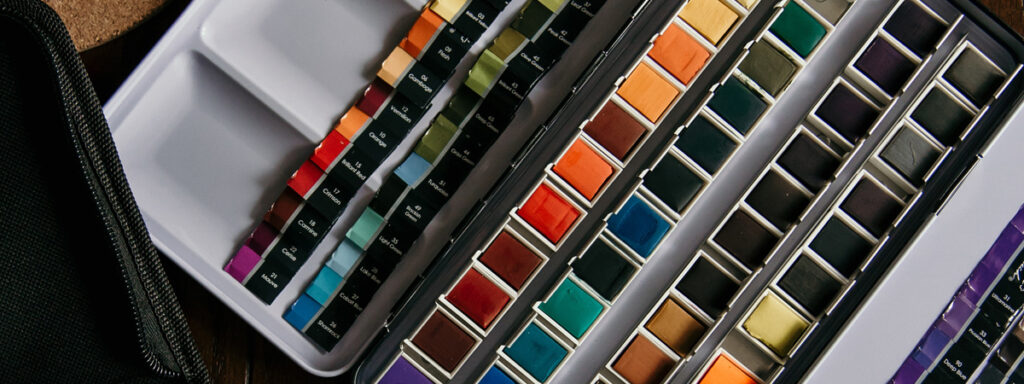
Having an essential set of paints is crucial for traditional artists who work with mediums such as acrylics, watercolors, or oils.
A well-chosen palette of paints provides you with a range of colors, allowing you to create vibrant, harmonious, and expressive artwork.
Here are some key factors to consider when assembling your essential set of paints:
Artist-Grade Paints:
Opt for artist-grade paints, which offer higher pigment concentrations and better lightfastness compared to student-grade paints.
Artist-grade paints ensure that your colors remain vibrant and true over time.
These paints are made with high-quality pigments, providing you with more intense hues and better color mixing capabilities.
While they may be more expensive, investing in artist-grade paints will significantly impact the quality of your artwork.
Primary Colors:
Start with a selection of primary colors to create a versatile color palette. Primary colors include red, blue, and yellow. By mixing these colors, you can produce a wide range of secondary and tertiary colors.
Having primary colors allows you to explore color theory, practice color mixing, and achieve precise color harmonies.
Look for primary colors that are pure and strong to ensure the best mixing results.
Additional Colors:
In addition to primary colors, consider including a few additional colors to expand your palette. Earth tones, such as burnt sienna, raw umber, and yellow ochre, can provide a range of natural hues and enhance the versatility of your color mixing.
Additionally, consider including black and white paint. While you can mix various shades of gray and achieve tints and shades using primary colors, having black and white on your palette can be convenient for certain techniques and achieving specific effects.
Limited Palette vs. Extensive Palette:
Decide whether you prefer a limited or extensive palette.
- A limited palette consists of a small selection of colors that are carefully chosen to cover a broad range of hues and tones. This approach encourages color harmony and a deeper understanding of color mixing.
- An extensive palette, on the other hand, includes a wide range of colors, allowing for more immediate access to specific shades and variations.
Experiment with both approaches to see which one suits your artistic style and preferences.
Tube Size and Quantity:
Consider the size and quantity of the paint tubes you purchase.
- Smaller tubes, typically 20 ml or 37 ml, are a cost-effective option for beginners or when trying out new colors.
- Larger tubes, such as 60 ml or 150 ml, are suitable for colors you use frequently or in larger quantities.
Evaluate your usage patterns and budget to determine the appropriate tube sizes and quantities to include in your essential paint set.
Storage and Organization:
Proper storage and organization of your paints ensure their longevity and ease of use.
Keep your paints in a cool, dry place away from direct sunlight to prevent them from drying out or degrading. Consider investing in an airtight palette or palette box to keep your paints moist and ready for use.
Labeling your paints and organizing them by color or brand can save you time and make the selection process more efficient.
Experimentation and Color Mixing:
Remember that your essential set of paints is a starting point. As you gain experience and confidence, feel free to experiment with new colors and expand your palette.
Mixing colors opens up endless possibilities and allows you to achieve unique hues and tones.
Take the time to practice color mixing, explore different color combinations, and experiment with various techniques to develop your artistic voice.
Quality Brushes and Accessories:
Alongside your essential set of paints, ensure that you have high-quality brushes, palette knives, and other accessories that complement your painting style.
By investing in high-quality accessories, you’ll have the necessary tools to fully explore your artistic potential allowing you to express your unique style, achieve desired effects, and elevate the overall quality of your artwork.
Experiment with different brush types, sizes, and techniques to discover new possibilities and refine your painting skills.
Remember to care for your brushes and accessories diligently to ensure their longevity and continued performance.
Lighting Setup and Easel
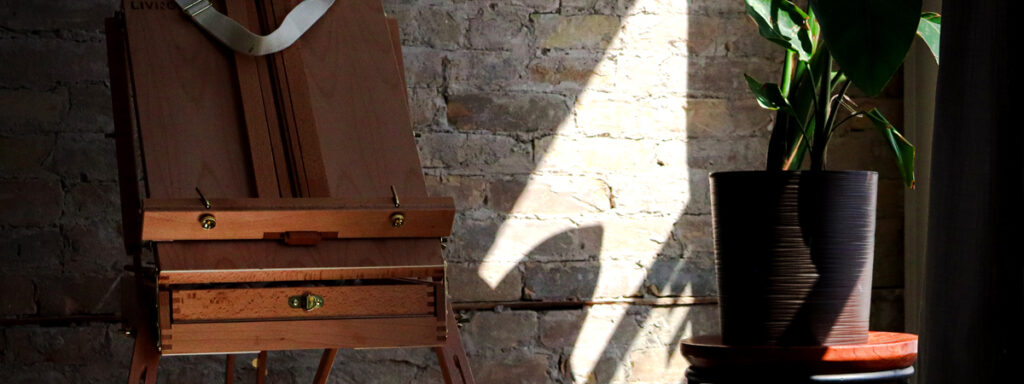
Creating art in a well-lit environment and having a sturdy and adjustable easel can greatly enhance your artistic process and the quality of your artwork.
Proper lighting and a suitable easel are essential tools for traditional artists.
Here are some key considerations when setting up your lighting and choosing an easel:
Lighting Setup:
Natural Lighting:
Whenever possible, take advantage of natural lighting in your workspace.
Position your easel near a window to benefit from the diffused natural light.
North-facing windows are ideal, as they provide consistent, indirect light without casting harsh shadows.
Natural light accurately represents colors, allowing you to make accurate color choices and observe subtle tonal variations.
Artificial Lighting:
In situations where natural light is insufficient or unavailable, invest in appropriate artificial lighting.
Choose light sources with a color temperature close to natural daylight (around 5000-6500 Kelvin).
LED lights are energy-efficient and offer adjustable color temperature options.
Avoid using incandescent or fluorescent lights, as they can distort colors and cast unwanted shadows.
Positioning:
Position your lights to minimize shadows on your working surface.
Use a combination of overhead lighting and angled lights to achieve an even illumination across your artwork.
Experiment with different light placements to find the setup that works best for your specific needs and artistic style.
Adjustable Lighting:
Opt for lighting fixtures with adjustable brightness and directionality.
Having the ability to adjust the intensity and angle of your lights allows you to create the desired atmosphere and highlight specific areas of your artwork.
Consider using adjustable light stands or clamp lights that can be easily positioned and directed.
Lighting Accessories:
Use diffusers or light modifiers to soften the light and reduce glare.
Diffusers can be in the form of translucent panels or fabric that help distribute the light more evenly and prevent harsh reflections.
Additionally, consider using a color-accurate lightbox or color checker to ensure accurate color representation in your artwork.
Easel:
Stability and Adjustability:
Choose an easel that provides stability and can securely hold your artwork.
Look for sturdy construction and adjustable features that allow you to set the height, angle, and orientation of your work surface.
Adjustable legs and a sturdy base are particularly important for maintaining a comfortable and ergonomic working posture.
Material and Weight:
Consider the material and weight of the easel.
Wooden easels offer durability and a classic aesthetic, while aluminum or metal easels are lightweight and more portable.
Determine whether you require a studio easel, which provides greater stability but is less portable, or a tabletop or portable easel for flexibility and convenience.
Size and Capacity:
Ensure that the easel can accommodate the size and weight of your artwork.
Some easels have weight or size limitations, so choose one that can support your preferred working dimensions.
Pay attention to the maximum canvas height and width that the easel can hold to avoid any limitations on your artistic expression.
Working Surface Options:
Consider the type of working surface offered by the easel.
Some easels have a built-in easel board or panel, while others require you to attach your painting surface.
Decide whether you prefer a built-in surface for convenience or if you prefer the flexibility of using different supports.
Storage and Portability:
If you have limited space or need to move your easel frequently, consider easels that offer compact storage or are easily foldable.
Some easels come with additional storage compartments for brushes, paints, and other art supplies, which can be convenient for organizing your workspace.
Easel Accessories:
Explore accessories that can enhance your easel’s functionality, such as adjustable canvas holders, palettes, or brush holders.
These additions can make your painting process more efficient and enjoyable.
Remember, finding the right lighting setup and easel is a personal choice that depends on your artistic preferences, workspace limitations, and budget. Take the time to research different options, seek recommendations from fellow artists, and consider trying out different setups to find what works best for you.
Creating a well-lit environment and working on a sturdy easel will provide you with the necessary support and comfort to focus on your art and bring your creative vision to life.
Conclusion
Embarking on your artistic journey as a traditional artist requires the right tools to unleash your creativity and reach your full potential. By having a set of high-quality sketching pencils, a versatile brush collection, the right paper and sketchbooks, a basic set of paints, and a well-lit workspace with an adjustable easel, you’ll be well on your way to creating stunning traditional artworks.
As you progress and gain experience, don’t be afraid to experiment and expand your collection of tools. Discovering new brushes, paints, papers, and lighting setups can open up new possibilities and avenues for artistic exploration.
Additionally, honing your skills with these tools requires dedication, practice, and a commitment to continuous learning. Take advantage of resources such as art classes, workshops, and online tutorials to further develop your techniques and artistic vision. Surround yourself with a community of fellow artists who can provide support, inspiration, and valuable feedback.
Ultimately, the journey of a traditional artist is a personal and unique one. Your choice of tools and artistic style will evolve, reflecting your individuality and creative voice. Embrace the process, be open to experimentation, and allow yourself the freedom to explore new techniques and mediums.
Let your imagination soar, and with the right tools in your hands, create art that resonates with your soul and captivates the hearts of others.
Remember, the journey is just as important as the destination. Enjoy the process, embrace the challenges, and savor the satisfaction that comes with creating something truly extraordinary.
Your passion, combined with the right tools, will help you navigate the realm of traditional art and leave a lasting artistic legacy.
